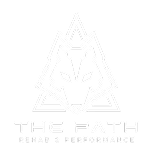Should you start hangboard training for rock climbing?

Almost every rock climber has encountered the scenario where in their early stages of the sport, they see lots of improvement quickly. You probably remember this stage fondly. The first day in the gym or at the crag is a humbling experience on V1 problems or 5.7 routes that left you pumped and unable to open a jar for days. But you officially caught the climbing bug and quickly you’re hitting the walls 3+ days per week and starting to think you’re a pro. A couple of months in and you’re already sending some V3 problems, accumulating gear like it’s your job, and taking all of the courses to be able to try some routes outside. At this rate, you’ll be sending V8’s and 5.12’s before the year is out. Or so you thought, until you finally dip your toe into the world of V4 problems and your progress comes to a screeching halt. Suddenly, your self-talk shifts from “I’ll be sending advanced grades in a year,” to “I’ll be stuck on V4’s forever.” You then do what any progress-hungry athlete would do: you copy your favorite YouTube climber and buy a hangboard. Surely with some more finger strength you’ll be able to break through to the next level, right?
Not quite yet.
The reality for most climbers is, for the first 1-2 years of rock climbing, the bottleneck tends to be movement efficiency and skill repertoire more so than raw finger strength. Despite rapid early improvements in climbing movement, many novice climbers will often find themselves muscling through crux sections of a route or problem only to watch a more experienced climber flow through with seemingly minimal effort. Only with increasing exposure to a variety of moves across a variety of routes, on a variety of rock types, will these moves start to come automatically and climbers start to again see progress in their grades, dancing through crux sessions with less perceived effort. Until movement efficiency improves to an automatic and subconscious level on moderate routes, finger strength is likely not the rate-limiting factor.
Furthermore, during the first 1-2 years of climbing, our finger tendons and pulleys are exposed to exponentially greater and more frequent tensile forces compared to our pre-climbing days. Climbing several days per week in and of itself will lead to significant improvement in finger and hand strength, similar to the rate of improvement one would see in quad strength when picking up back squats for the first time after being sedentary for their entire lives. It’s a drastically greater stimulus than our muscles and tendons are used to. And with the increase in intensity of climbing over the first year, the muscles and tendons will continue to adapt accordingly without additional finger training. With added hangboard training during this time, injury risk can increase significantly due to the notable ramp up in tendon exposure, when the tendons are still relatively new to this quantity and frequency of loading.
But just like with squatting, after adequate practice and exposure to climbing, athletes will require additional supplementary training to continue to make progress. To continue making improvements in the back squat and quad-specific strength, athletes will eventually need to implement a variety of progressions such as adding sets, fluctuating intensity in a progressive fashion, and/or adding more squat variations and accessory exercises. With climbing, this typically means initiating a progressive hangboard routine once the tendons are ready and finger strength truly becomes the primary limiting factor.
The optimal time for initiating a hangboarding protocol will vary depending on the individual climber and their preferred climbing discipline, but a general rule of thumb is to hold off on hangboarding until around 1 year for sport climbers, with boulderers likely benefiting a bit sooner. Some performance-based criteria to look out for include: are you sending V4-5’s in the gym regularly? Are you sending 5.11’s in the gym, and 10’s outside? Do you find yourself getting pumped out on crux moves despite using “optimal” beta gained from more advanced climbers? If you find yourself answering yes to these questions, it may be time to consider initiating a progressive hangboard routine a couple of times per week on climbing off-days. For further details on hangboarding protocols, check out the book Training for Climbing by Eric Hörst to minimize the guesswork surrounding this contentious topic.
Having pain that is preventing you from climbing to your potential? Click here to chat with one of our Docs for free and get back on track ASAP.
Dr. Brooks Kenderdine
PT, DPT, CSCS, USAW-1
Co-Owner | The PATH Rehab & Performance
Sign up for our newsletter
Join our community and receive exclusive physical therapy insights, training strategies, and recovery techniques tailored for active people.
